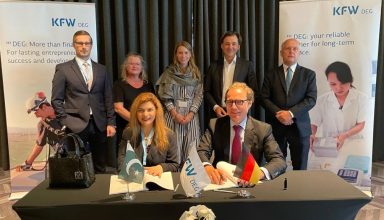Travel sustainably through Germany this summer for Dh33

Kanutour im Nationalpark Unteres Odertal, Naturparkführerin Frauke Bennett.
With schools out for summer and the mercury rising in the GCC, travellers looking to explore Europe eco-consciously can revel in Germany’s plethora of sustainable offerings.
With the popularity of rail travel on the rise and the hunt for eco-aware methods becoming ever-more necessary, Germany is moving to meet demand by announcing an affordable public transport option for all. Now just €9 (Dh33), travellers can enjoy a month of unlimited travel on regional trains, S-Bahn and U-Bahn trains, as well as buses and trams. The offer is valid for travellers until August 31, 2022.
“Sustainable tourism is something Germany is serious about,” said Yamina Sofo, director of sales and marketing at the German National Tourist Office (GNTO), the regional office of the German National Tourist Board. “We recognise the demand for eco-conscious offerings and want to ensure that those are accessible for all, regardless of budget. Germany is a treasure trove of natural beauty and we’re confident that GCC travellers will be blown away by the diverse landscapes.”
While long-distance journeys are not included in the incredible €9 offer, by linking the various transport associations, it is still easily possible to explore the whole of Germany with local transport. Some of the key landmarks easily accessible by train include the Uckermark Lakes Nature Park in Brandenburg, which is known as the Land of Lakes and home to more than 300 lakes, moors, rivers, and streams. Visitors can participate in all kinds of water activities, such as canoeing, swimming, or cycling along the shores.
How to get there: From all across Germany, it is possible to travel comfortably to Berlin with Intercity Express or Intercity connections. A regional train will then take travellers all the way to Templin, Fürstenberg, Zehdenick, or Prenzlau Nature Parks. Take a round trip across the region on the UckermarkShuttle bus line.
Palatinate Forest Biosphere Reserve in Rhineland-Palatinate should also be top of the agenda. The dense tree population with its sweet chestnuts, copper beeches, and sessile oaks is so unspoilt that wildcats and lynxes, peregrine falcons, eagle owls, and screech owls feel at home there.
How to get there: Long-distance trains lead to Mannheim, Neustadt an der Weinstraße, Kaiserslautern or Karlsruhe, for example. From there, the Rhein-Pfalz-Takt provides access to the Palatinate Forest. Those staying overnight can use local buses and regional trains free of charge with the PfalzCard.
Wadden Sea National Park is home to mudflats, dunes, beaches, salt marshes, islands and the Halligen – stunning German islands. The area is one of the most fertile natural landscapes anywhere and is under special protection as a UNESCO World Heritage Site. People are magically drawn to this unique world heritage of nature, for mudflat hiking, horseback riding, fishing, or relaxing on one of the tiny islands or the Halligen.
How to get there: Using IC connections, travellers can reach Norddeich Mole from many cities in Germany. From there, take a ferry to Norderney and Juist. From the train stations Wilhelmshaven, Cuxhaven, Esens and Norden, buses run to the ferry terminals serving Baltrum, Wangerooge, Langeoog and Spiekeroog. The entire East Frisian peninsula can be travelled inexpensively on tour buses.
Further information can be found here: www.germany.travel and www.bahn.de.
[email protected] source: biztoday
